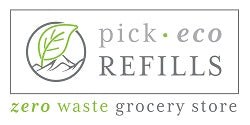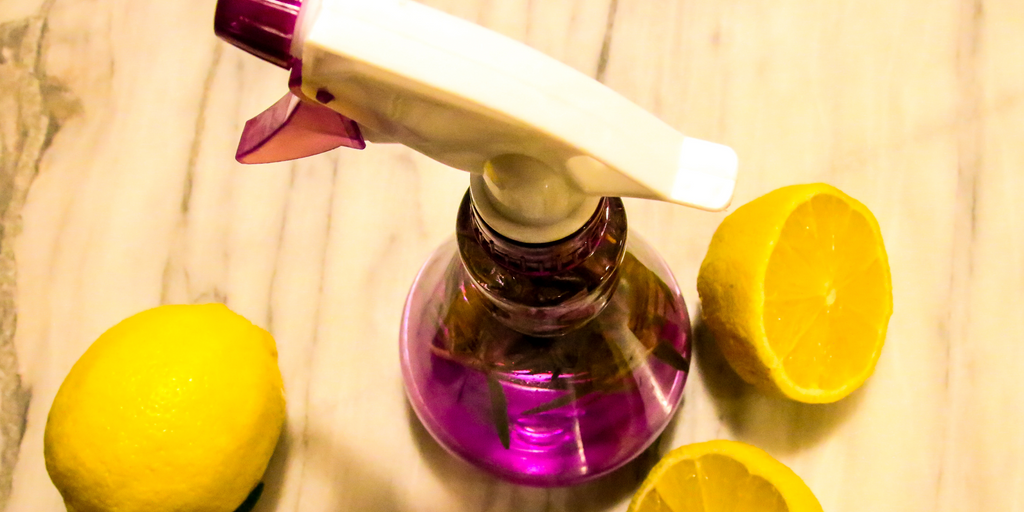Cleaning is a pretty essential part of most of our lives, and probably more so now than ever! But it can be expensive and sometimes difficult to find eco-friendly cleaners that work well. To help, we’ve created this quick how-to guide to give you two simple, customizable and affordable recipes for cleaners you can make at home. You can find ingredients and extra cleaning supplies in our store or shop with us online for an easy one-stop shop.
Read on to discover how to make your own eco-friendly and affordable household cleaners.
How to Use Essential Oils Safely
A note about essential oils: be sure to check that the specific oil you chose is safe for your lifestyle (for example, some essential oils are not considered safe during pregnancy or for young children). Always know the warnings and precautions about the essential oils you choose to ensure you and your loved ones have a great essential oils experience!
Do a spot test: it’s a good idea to test your DIY cleaners in an inconspicuous area before using them to clean a whole surface, just as you would with any other cleaning product to ensure your surfaces are cleaned effectively and according to what each surface needs.
Use distilled water: distilled water is important because, unlike tap water, it is purified to remove chlorine or bacteria that may grow in the bottle as the cleaner sits on your shelf, which helps to extend the shelf-life of your preservative-free DIY cleaner.
DIY All-Purpose Cleaner With Castile Soap
This gentle homemade all-purpose cleaner is super affordable, easy to make and works well on most surfaces. Keep in mind that this is not a disinfectant, so it effectively wipes and washes away dirt and bacteria rather than killing it (see below for a disinfectant cleaner recipe!).
Ingredients:
- 16 oz glass spray bottle
- 2 cups distilled water
- 2 tbsp of liquid castile soap
- Up to 20 drops of essential oil (optional)
Step 1: Add distilled water and liquid castile soap to the spray bottle.
Step 2 (optional): Add up to 20 drops of essential oil. Try a 50/50 blend of lavender and peppermint or lavender and eucalyptus for a fresh and floral scent. We recommend starting with just a small amount of essential oil (5 drops or so), then add more to suit your preference.
Essential oils add fragrance and can even provide some anti-bacterial, anti-fungal or anti-microbial properties to your cleaner. Tea tree, eucalyptus, lavender, cedarwood, lemongrass and peppermint essential oils are all popular options for adding a boost to homemade cleaners. Add just one or create your own personalized blend. If you chose a scented castile soap, simply bypass this step or choose an oil that will complement the scent of your castile soap.
Step 3: Clean. Spray your DIY cleaner directly onto a dirty surface or your favorite cleaning cloth, then wipe away any dirt, dust or grease. For difficult messes, spray the cleaner on the surface and let it sit for a few minutes. You can also sprinkle some baking soda on the surface or try one of our many cleaning brushes for extra scrubbing power.
Step 4: Store. Store your homemade cleaner just like you would any other cleaning product: in a cool, dark area out of reach of children and pets. If you added essential oils, take special care to store this out of sunlight as it can damage the oils. You can generally keep your homemade cleaner for up to 3 months (if you don’t use it all before then!).
Need a smaller batch? If you find you’re only using a very small amount of this all-purpose cleaner, you can make it in smaller batches to prevent waste. Simply use the following measurements:
- 2 oz glass spray bottle
- 2 oz distilled water
- 3/4 tsp of liquid castile soap
- 1-3 drops of essential oil (optional)
DIY Disinfectant Cleaner with Hydrogen Peroxide
Looking for something a little more powerful? Use this recipe to make a cleaner that is delightfully scented and has just over a 3% concentration of hydrogen peroxide. According to the CDC, hydrogen peroxide is “active against a wide range of microorganisms, including bacteria, yeasts, fungi, viruses, and spores” and 3% hydrogen peroxide “is a stable and effective disinfectant when used on inanimate surfaces”.
Plus, you can add some essential oils to potentially boost the anti-bacterial, anti-fungal and anti-microbial properties of your cleaner.
We recommend making this cleaner in small batches since hydrogen peroxide is most effective when stored for a short time (it begins turning into water and oxygen once opened, and sunlight accelerates this process).
Small amber spray bottles are perfect since you only have to take a small amount of the hydrogen peroxide out of storage at a time, and the dark color will help to preserve the solution longer than a clear glass bottle could.
Ingredients:
- 2 oz amber glass spray bottle
- 2.5 tbsp distilled water
- 1 tbsp of 8% hydrogen peroxide (ps. you can use the 8% hydrogen peroxide as-is for heavy-duty cleaning!)
- Up to 5 drops of essential oil
Step 1: Add water and peroxide to your spray bottle.
Step 2: Add up to 5 drops of essential oils. Try 2 drops of lavender and 2 drops of tea tree oil for a clean smell and serious disinfecting properties.
Tea tree, eucalyptus, lavender, cedarwood, lemongrass, and peppermint essential oils are all popular options for adding a pleasant scent boost to homemade cleaners, and there are many more to choose from! Mix and match our essential oil suggestions, or try a different oil that you like!
Step 3: Clean. Always wear gloves when cleaning with hydrogen peroxide. Spray onto a cloth or directly onto a surface and wipe clean, or allow to sit for extra disinfecting power (the CDC says that a 3% solution needs to sit on a surface for 6-8 minutes to disinfect from certain common viruses). This recipe is safe to use on most surfaces, but be sure to spot-test before going all-out to make sure your surfaces can handle the cleaner.
Step 4: Store. Always store your cleaner in a dark room in an opaque or amber bottle with the lid closed tightly. Keep it out of reach of children and pets just like any other cleaning supplies. Peroxide will remain effective for a maximum of 6 months after opening the original container, so plan to use all your awesome new cleaner before it loses its fizziness.
Looking for a disinfectant that is free of hydrogen peroxide? Keep these Health Canada-approved disinfectant strips by Tru Earth on hand to use whenever you may need them. Just add one strip and some water to a spray bottle, shake it up, and you’re good to go!
We hope this quick guide for how to DIY your own eco-friendly and low waste cleaners was helpful! Swing by our store on Mill Street or visit us online to get all the supplies to make your own.







